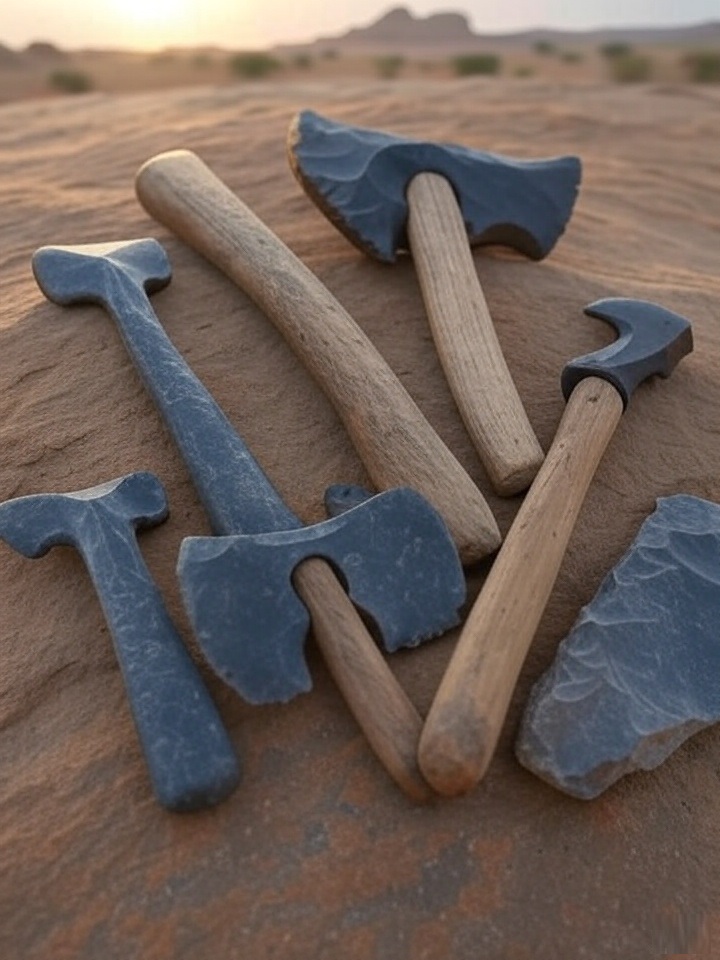Faya Palaeolandscape Blog
Exploring the Ancient History of a UNESCO World Heritage Site
80,000-Year-Old Tools: A Glimpse into Faya’s Ancient Craftsmanship
Published on July 17, 2025
The Faya Palaeolandscape in Sharjah, UAE, a UNESCO World Heritage Site, has yielded some of the most significant archaeological finds in the Arabian Peninsula. Among these are stone tools dating back 80,000 years, discovered at Jebel Faya, a limestone ridge central to the site. These artifacts offer a window into the ingenuity of early humans who thrived in a challenging desert environment.
Craftsmanship of the Middle Paleolithic
The tools, found in the site’s Middle Paleolithic layers, showcase advanced techniques such as bidirectional reduction, where stone was carefully shaped from both sides to create sharp, efficient cutting edges. This level of sophistication suggests that the people of Faya possessed a deep understanding of their materials and environment, adapting their technology to survive in arid conditions.

A Hub of Human Activity
The presence of these tools indicates that Faya was more than a transient stop for early humans. It served as a hub for habitation, likely due to its strategic location and resources. The tools reflect interactions between populations moving from Africa to Eurasia, contributing to our understanding of human dispersal and cultural exchange in prehistory.
Why It Matters
The 80,000-year-old tools are a testament to human resilience and innovation. They highlight the Faya Palaeolandscape’s role as a key site for studying human evolution in desert environments. This blog aims to share such discoveries with a global audience, fostering appreciation for this remarkable archaeological treasure.
Disclaimer
This blog is an independent, non-commercial project dedicated to sharing educational content about the Faya Palaeolandscape. All information is sourced from credible, publicly available resources and is intended for educational purposes only. This site is not affiliated with any official organizations managing the Faya Palaeolandscape.